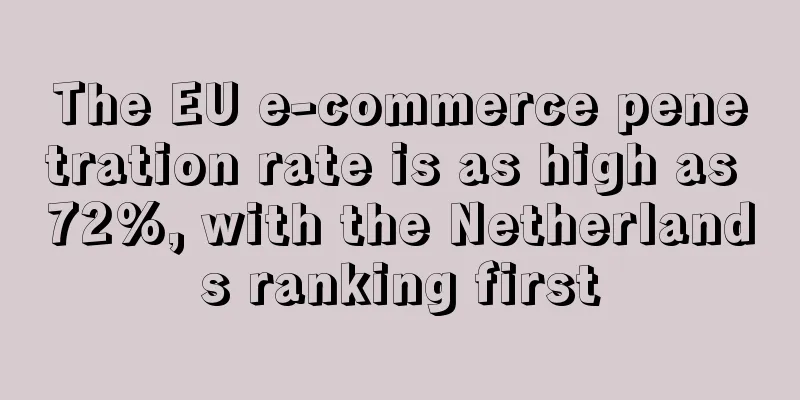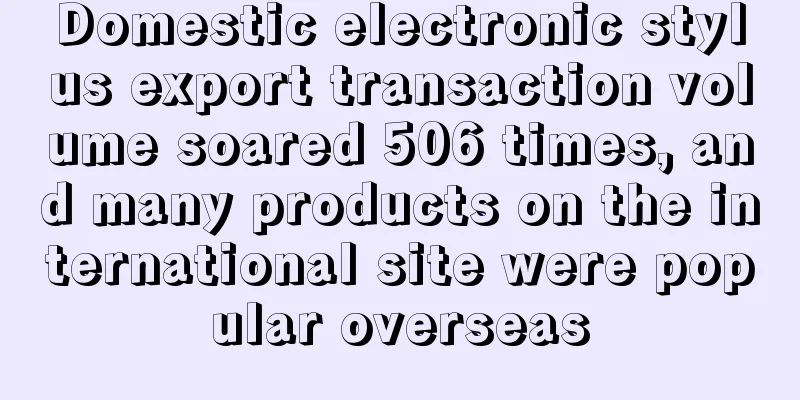The EU e-commerce penetration rate is as high as 72%, with the Netherlands ranking first

|
It is reported that recently, a survey conducted by Eurostat in the last 12 months showed that the e-commerce penetration rate in the EU , that is, the average proportion of Internet users who shop online, reached 72% , among which the Netherlands ranked first in Europe.
The European Statistical Office pointed out that with the invasion of the new coronavirus in Europe, consumption habits and preferences across Europe have undergone major changes, and online shopping has gradually become the first choice of Europeans, and online shopping has continued to grow. Driven by the strong impact of the epidemic, e-commerce has ushered in a golden period, and online shopping has exploded. In the 12 months of 2020, a staggering 89% of people aged 16 to 74 in the EU used the internet, with 72% buying or ordering goods or services online for private use . This is an increase of 4 percentage points compared to 68% of internet users in 2019 and 10 percentage points compared to 62 % in 2015 .
Among many countries in the EU, the Netherlands had the highest e-commerce penetration rate in the EU last year, with 91% of Internet users having purchased or ordered goods or services through the Internet in the region .
Denmark ranked second, reaching 90% , followed by Germany at 87% , Sweden at 86% , and Ireland at 81% . Hungary 's e-commerce penetration rate is about 70% . These countries all had relatively good e-commerce development last year, and e-commerce sales have increased significantly.
On the other hand, the proportion of online shoppers in Bulgaria ( 42%) , Romania ( 45%) and Italy (49 % ) is less than 50% , and the development of e-commerce needs to be improved .
In the past five years, the countries with the largest increase in the proportion of online shoppers among Internet users are Romania , which increased by 27 percentage points; the Czech Republic and Croatia increased by 25 %; and Hungary increased by 23 % . It can be seen that the e-commerce development in these four countries has great potential, and they are catching up with other European countries at a very fast pace.
In general, the e-commerce penetration rate in the EU is very high, e-commerce is developing very rapidly, the number of online shoppers in various countries has increased significantly, and the country is in a leading position in the world. European Union E-commerce Netherlands |
<<: Fashion retailer C&A enters German e-commerce platform Zalando
>>: The American moving wave is coming, and peripheral products will sell well!
Recommend
What is perfectdiary? perfectdiary Review, Features
perfectdiary is a brand under Guangzhou Yixian E-C...
As the epidemic situation "rises", Dongguan Lens Technology suspends production activities!
Affected by the new round of epidemic, Lens Techn...
Chinese sellers may be caught in the crossfire of trademark applications in the US
In recent years, cross-border e-commerce has deve...
What is AbeBooks? AbeBooks Review, Features
AbeBooks is headquartered in Victoria, Canada. Th...
What is Baolian Cloud? Baolian Cloud Review, Features
Baolian Cloud is a cloud system customized by Baol...
TikTok is on a roll! The popularity of the app has soared, with monthly downloads exceeding 80 million
A few days ago, the news that "Fan Bingbing ...
What is Zhiyuan Intellectual Property? Zhiyuan Intellectual Property Review, Features
Zhiyuan Intellectual Property is a company that p...
Attention European sellers! New Amazon advertising features are launched
With the launch of Amazon multi-market campaign c...
The hottest trends this year! Etsy's six top home decor trends revealed
As people spend most of their time at home during...
What is Vatgia.com? Vatgia.com Review, Features
Vatgia.com is one of the largest shopping website...
What is PayFast? PayFast Review, Features
PayFast offers flexible payment options for any b...
Is there a pitfall in selling accounts and “exiting”? Amazon store transactions are fraught with risks
Back in 2020, when most Amazon sellers were still...
A large number of sellers are "making money" in emerging markets
Is it difficult to make money outside of Europe a...
At 150 euros per order, Germany has the highest average online order spend in Europe
Recently, a report released by Sendcloud and Niel...
During the peak season, air freight capacity in the Asia-Pacific region has been tightened and freight rates have risen
According to foreign media reports, due to the ch...









